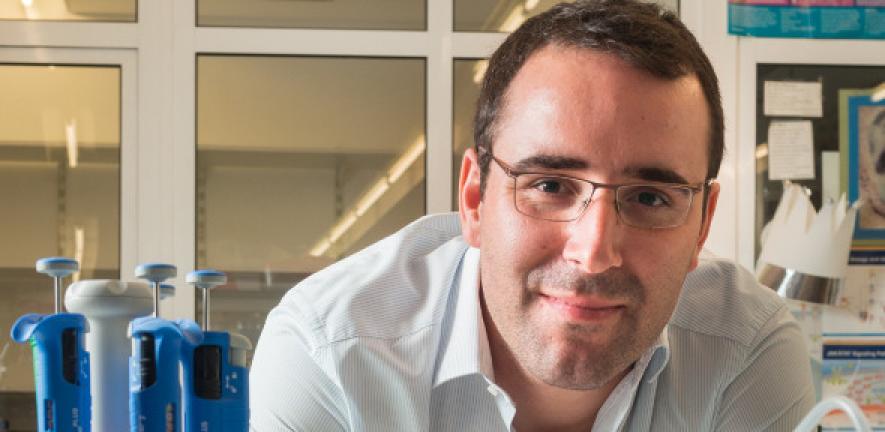
This method, which mimics the tools found in Mother Nature’s own toolbox, employs chemical reactions to modify the function of proteins such as antibodies – for example, by attaching drug molecules to them so they could be delivered to a specific location. This would make the drugs more effective, and produce fewer side effects, since they can be directed straight to the cancer cells and not to healthy tissues.
The same method is being developed to precisely attach labels to proteins associated with certain diseases so that they can be monitored in patients.
"Our protein-modification technology is cost-effective and easy to apply. We hope it may be used in laboratories around the world to help develop new drug conjugates with improved effectiveness and reduced side-effects for diseases such as cancer." Dr Gonçalo Bernardes
The team’s research has just been published in JACS (the Journal of the American Chemical Society) and highlighted in publications including Chemical & Engineering News. "We really want to spread the news about our work," says Dr Bernardes. "Our protein-modification technology is cost-effective and easy to apply. We hope it may be used in laboratories around the world to help develop new drug conjugates with improved effectiveness and reduced side-effects for diseases such as cancer."
Scientists have been working for some time on ways to modify proteins in order to attach drugs or other molecules to them for a range of biological and therapeutic applications. But many current methods compromise protein function, while some require highly complex genetic engineering that is "difficult to implement routinely," says Dr Bernardes.
"What we have discovered," he says, "is a simpler technology that uses a computer-designed reagent to modify proteins by attaching molecules at a very specific location within the protein’s sequence. We can do this very efficiently without affecting the protein’s structure and function and without the need for any genetic engineering."
In nature, modifying proteins at precise locations is a complex process controlled by enzymes. Much research has been conducted into ways of artificially modifying proteins. It has often involved using reagents that react with naturally occurring amino acids such as cysteines.
But this new method instead targets other amino acids, in this case lysine residues, which are much more abundant in proteins than cysteines. And Dr Bernardes’ team used a computer-designed sulfonyl acrylate reagent that selectively targets only the most reactive lysine in a protein.
In the published research Dr Bernardes and his colleagues – who span the University of Cambridge Department of Chemistry and the Institute of Molecular Medicine Lisbon – demonstrate that their technology works in five clinically relevant proteins. These include the therapeutic antibody Trastuzumab, which is used in the treatment of breast cancer.
The Institute of Molecular Medicine is based in Portugal’s largest hospital. "In the paper, we demonstrate our technology on two proteins that the Lisbon lab is using to image apoptotic tissue (tissue where cell death is taking place)," says Dr Bernardes. "We have also applied it on an antibody that is being used there to treat breast cancer."
The researchers have discovered so far that the technology enables the construction of antibody-drug conjugates that work when tested in cells. "In in vitro tests, we have seen an improvement in the efficacy of the drug by delivering it inside the cancer cells.
He adds: "We now want to test it further, in vivo, to test that the link between the molecule and the drug is stable under circulation and that there is no premature release of the drug before it reaches the tumour."
- Maria. J. Matos et al. Chemo- and Regioselective Lysine Modification on Native Proteins, Journal of the American Chemical Society (2018). DOI: 10.1021/jacs.7b12874.

